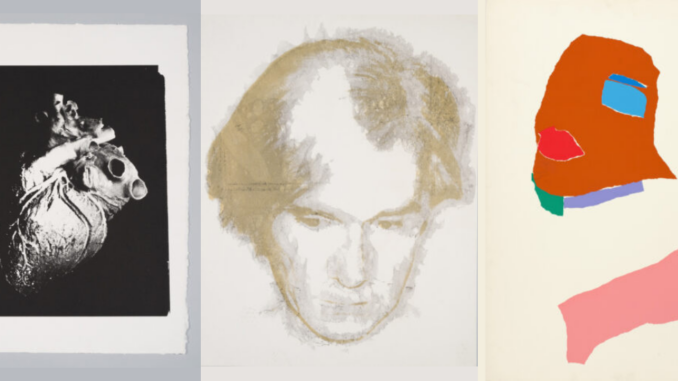
Emily Fritz | A&E Editor
“People associate Warhol with New York and glamor,” director of the Andy Warhol Museum Patrick Moore told The Duke. But the Pittsburgh-based artist’s story runs much deeper than his time in New York or his trademark for running with the privileged or prestigious.
The museum’s temporary exhibit, “Unseen: Permanent Collection Works,” showcases pieces from Warhol’s life that go largely unseen by the public. Some works are seldom seen due to nudity, others were experimental and many reveal new facets of Warhol that have been largely unknown.
“‘Unseen’ is an opportunity for the museum to delve into areas of the collection that are new even to us,” Moore said in a news release. “These are objects that are both aesthetically beautiful and that have stories to tell. We’re proud to share them with the public for the first time.”
Through the museum’s history, there have been many different administrators, each integrating their personal tastes into the museum displays. For Moore, the unseen works are reflective of his own experiences in New York, Warhol’s experience with his sexuality and pouring back into the queer community today.
“I think it’s both physically very beautiful but also very emotionally resonant,” Moore said. “I do think that he spent basically his whole life dealing with shame around being a gay man. And his campiness being one way to kind of feel an affinity with other gay men, but also a kind of crippling insecurity that extended throughout his life.”
Revealing works that contained sexual content, like that of “Love” (1983) or “Fellatio” (1978), showcased what Moore refers to as the “trap of knowing and [Warhol] wanting to participate” in the sexual revolution of the 1970s, but being unable to because of personal shame or insecurity about his appearance.
An interesting part of the collection was “Ladies and Gentlemen (Alphanso Panel I) – Trial Proofs” (1975) and “Ladies and Gentlemen (Iris) – Trial Proof” (1975). Commissioned in 1974 by Italian art dealer Luciano Anselmino, Warhol created paintings, prints and drawings of transgender women living on the streets of New York City.
“Unlike other transgender women in Warhol’s retinue, like Candy Darling, these women were not elevated to Superstars, and never appeared in films or performances,” according to the museum placard.
While Warhol was and remains a queer icon, the inclusion of these women was not motivated by social equality, but rather by financial gain, Moore said.
“[The women] were paid a very minimal amount of money, and I’m sure that Warhol was not paid a minimal amount of money to make those pictures. So the positioning of Warhol as some kind of extraordinarily forward thinking person … is maybe not accurate,” he said.
“Honestly, the more you learn about artists and history, the more you realize there are so many artists who delved into commercial opportunities and things that stimulated them creatively,” American artist and designer KAWS told LUX magazine. “Andy Warhol being a very large part of that.”
Today, these paintings are on display as part of the Andy Warhol Museum’s efforts to bring better representation and promote equality efforts for the LGBTQIA+ community. Especially in light of Warhol’s faults and flaws, the museum strives to use the artist posthumously as a way for creating positive change.
As a single artist museum, it can be difficult to bring in local audiences and repeat visitors. Presenting Warhol’s art alongside new and upcoming artists can add opportunities for new interpretation while giving center-stage to artists today.
“Unseen: Permanent Collection Works” will close as an exhibit on March 4, but the museum’s next exhibit, “KAWS + Warhol,” will be on view from May 18 through Jan. 20.
“As an artist, I am humbled to be part of an exhibition alongside Warhol at his eponymous museum and to contribute to the ever-evolving legacy of one of the greatest artistic minds of our time,” KAWS said in a news release.
“I think [KAWS] and Warhol share a lot of things,” Moore said. “There’s a real undercurrent of the kind of spectacle of death and disaster that runs through both artists. And that’s what we’re trying to do at the museum is to show something new about both artists, by putting them up together.”
